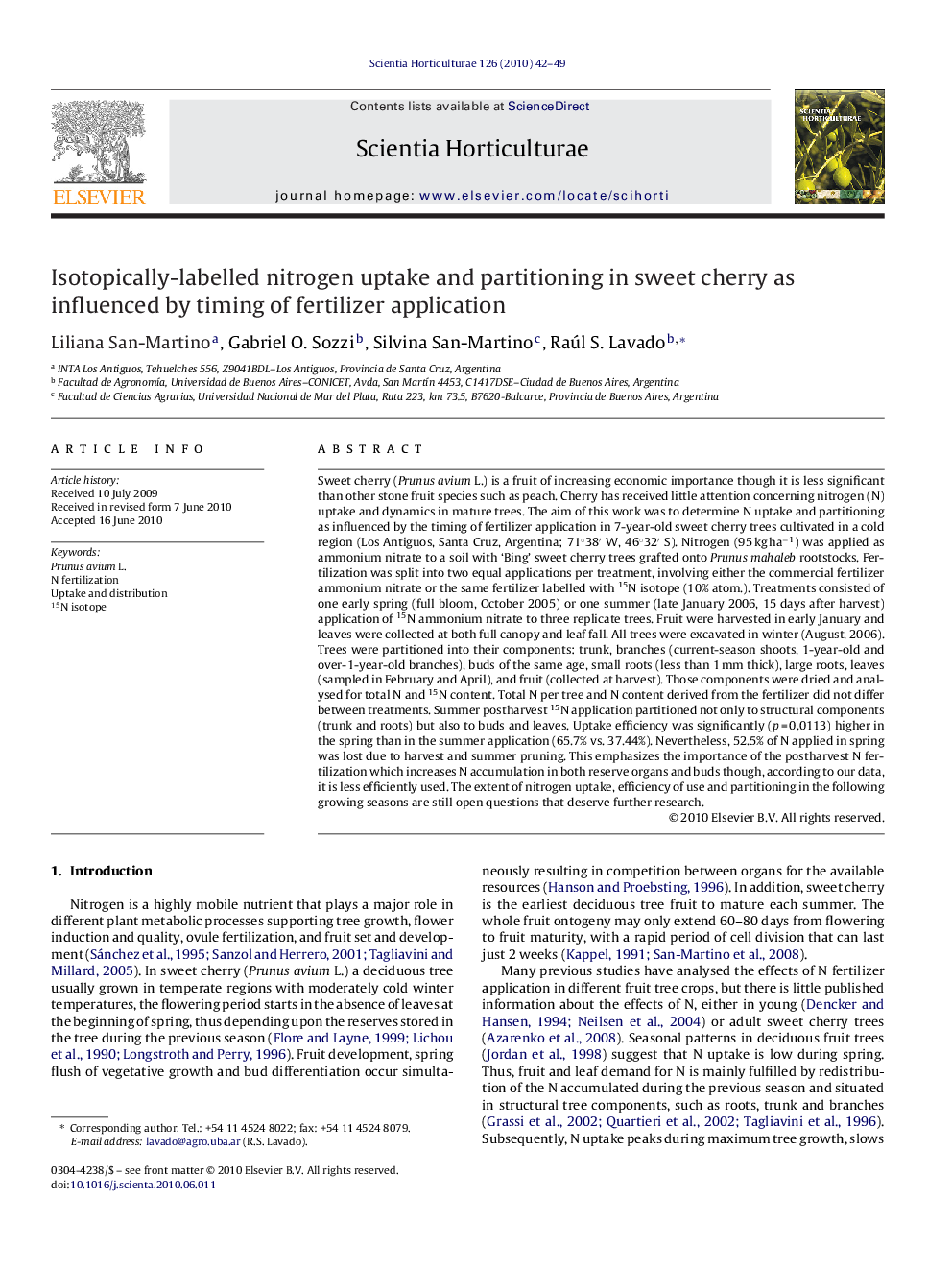| کد مقاله | کد نشریه | سال انتشار | مقاله انگلیسی | نسخه تمام متن |
|---|---|---|---|---|
| 4568437 | 1331299 | 2010 | 8 صفحه PDF | دانلود رایگان |

Sweet cherry (Prunus avium L.) is a fruit of increasing economic importance though it is less significant than other stone fruit species such as peach. Cherry has received little attention concerning nitrogen (N) uptake and dynamics in mature trees. The aim of this work was to determine N uptake and partitioning as influenced by the timing of fertilizer application in 7-year-old sweet cherry trees cultivated in a cold region (Los Antiguos, Santa Cruz, Argentina; 71°38′ W, 46°32′ S). Nitrogen (95 kg ha−1) was applied as ammonium nitrate to a soil with ‘Bing’ sweet cherry trees grafted onto Prunusmahaleb rootstocks. Fertilization was split into two equal applications per treatment, involving either the commercial fertilizer ammonium nitrate or the same fertilizer labelled with 15N isotope (10% atom.). Treatments consisted of one early spring (full bloom, October 2005) or one summer (late January 2006, 15 days after harvest) application of 15N ammonium nitrate to three replicate trees. Fruit were harvested in early January and leaves were collected at both full canopy and leaf fall. All trees were excavated in winter (August, 2006). Trees were partitioned into their components: trunk, branches (current-season shoots, 1-year-old and over-1-year-old branches), buds of the same age, small roots (less than 1 mm thick), large roots, leaves (sampled in February and April), and fruit (collected at harvest). Those components were dried and analysed for total N and 15N content. Total N per tree and N content derived from the fertilizer did not differ between treatments. Summer postharvest 15N application partitioned not only to structural components (trunk and roots) but also to buds and leaves. Uptake efficiency was significantly (p = 0.0113) higher in the spring than in the summer application (65.7% vs. 37.44%). Nevertheless, 52.5% of N applied in spring was lost due to harvest and summer pruning. This emphasizes the importance of the postharvest N fertilization which increases N accumulation in both reserve organs and buds though, according to our data, it is less efficiently used. The extent of nitrogen uptake, efficiency of use and partitioning in the following growing seasons are still open questions that deserve further research.
Journal: Scientia Horticulturae - Volume 126, Issue 1, 23 August 2010, Pages 42–49